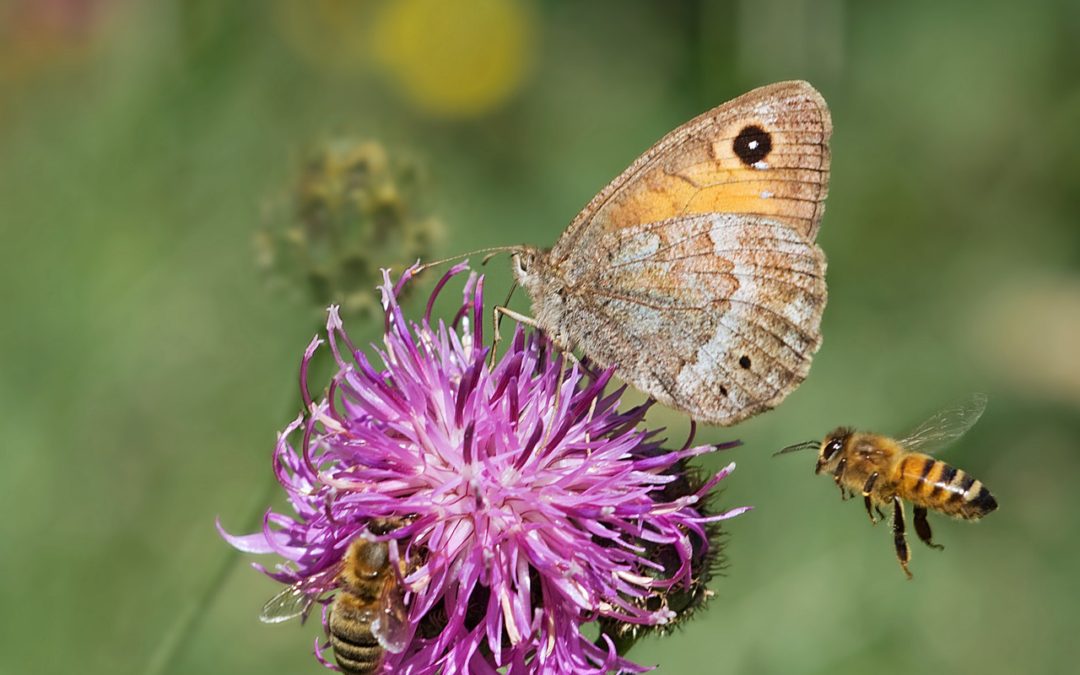Let’s face it, a world without pollinators would be a terrible, stale, fruitless, and colorless world! Having a pollinator garden is essential to improving our environment. Not only because pollinators are cool creatures to have around but because they will add to the production of your garden. Many vegetables require pollination to produce any fruit at all which makes for a very frustrating garden experience if there is not a way for the pollination to happen. It is important to find out what types of plants will attract pollinators and have them planted throughout your garden. It not only makes your garden more productive, it also makes it a well-balanced and beautiful experience for all.
We live in a world that is ever evolving and progress is all around us. Most of the time progress means we lose the natural environments around us. Pollinators tend to live in the environments we lose to progress and also in the ‘mess’ we have in our yards. Although we like to look out to our yards and see a nice crisp and clean world, pollinators love to fly around a crowded, dense yard with lots of color and debris but still have some open space to fly around in. If you would like to have a pollinator garden or yard and still want to be attractive to humans and keep your HOA at bay, there are many things you can do. Just know that pollinators do like to be under cover so planting many things in a small space can help and also leaving old items like dead trees and stumps would be great, if possible. I have only recently started looking up to enjoy all of the things fluttering around and I even begin to describe the joy it has given me to me in a world surrounded by these amazing creatures.
What are pollinators? When I first started learning about pollinators and the importance of them on the environment the three that came to mind were bees, butterflies, and hummingbirds. It turns out that the list goes way beyond those three. Did you know that bats, moths, all birds, flies, ladybugs, wasps, and beetles are also pollinators? In order to attract many of these you will need to plant items in all different levels – ground cover, perennials, annuals, shrubs, and trees. It is also important to plant flowers that will bloom throughout the entire year. Do your research to determine what you can put in your garden that will attract different pollinators all year long. Here are some plants you may want to add to your yard or pollinator garden:
Butterfly Bush * Yarrow * Rose of Sharon Hibiscus * Canna Lilies * Black-Eyed Susan * Cosmos * Calendula * Dill * Fennel * Parsley * Borage * Bee balm * Coneflowers * Aster * Goldenrod * St. John’s Wort * Lobelia * Salvia * Phlox* Zinnias* Daisies* Honeysuckle * Passionvine * Nasturtiums * Coral Honeysuckle * Verbena * Milkweed * Anise Hyssop * Sunflowers
It is important to have plants for all the different stages of a pollinator’s life as well. Milkweed, thistle, willow, stinging nettle, violets, mustard, white clover, blueberries, and wild cherry all provide food for hungry little caterpillars.
Having different colors in your garden is important because they each attract something new. If you clump alike colors together this will help draw the attention of them as they fly by. The shape of the flower is also very important because the pollen is extracted in many unique ways.
Colors that attract pollinators:
- Butterflies like red, pink, yellow, blue, and orange flowers that grow in a cluster
- Hummingbirds like flowers they can really get their noses in that are purple, red, pink, and orange
- Bees love yellow! They can also be drawn to purple hues
Like us, pollinators love the pleasant smell of herbs in the garden. You can plant oregano in your garden as a ground cover, providing shelter for the smaller pollinators. You can plant many basil in the garden that flower and attract but I found that African basil and Thai basil work great, last forever and the flavor is still great for cooking even with the flowers in full bloom.
A birdbath is a great addition to the garden and the birds will love it during the times of year when the rainfall is low. The bees do not do as well with such a big watering hole so if you make one that is on the ground they will be able to drink too. I did read an article that suggested putting a sponge in the birdbath to give the butterflies a place to land. That’s a good idea. For the ground, I usually take a tray bottom from a planter and put some river rock in it for them to stand on and then put some water in, up to the top of the rim. The butterflies will be able to enjoy these too. You can use the small trays and spread them all over your garden.
Before you do any planting, do your research. Know what plants will work for your zones and look to see if any of the plants listed here are on the invasive plant list in your area. You may want to know how tall and wide each plant grows as well. Using layers in your garden will help attract many different sizes of pollinators like bees, birds and butterflies. Remember a pollinator garden can be as small or as big as you want. Any garden made will add to our environment!

Recent Comments